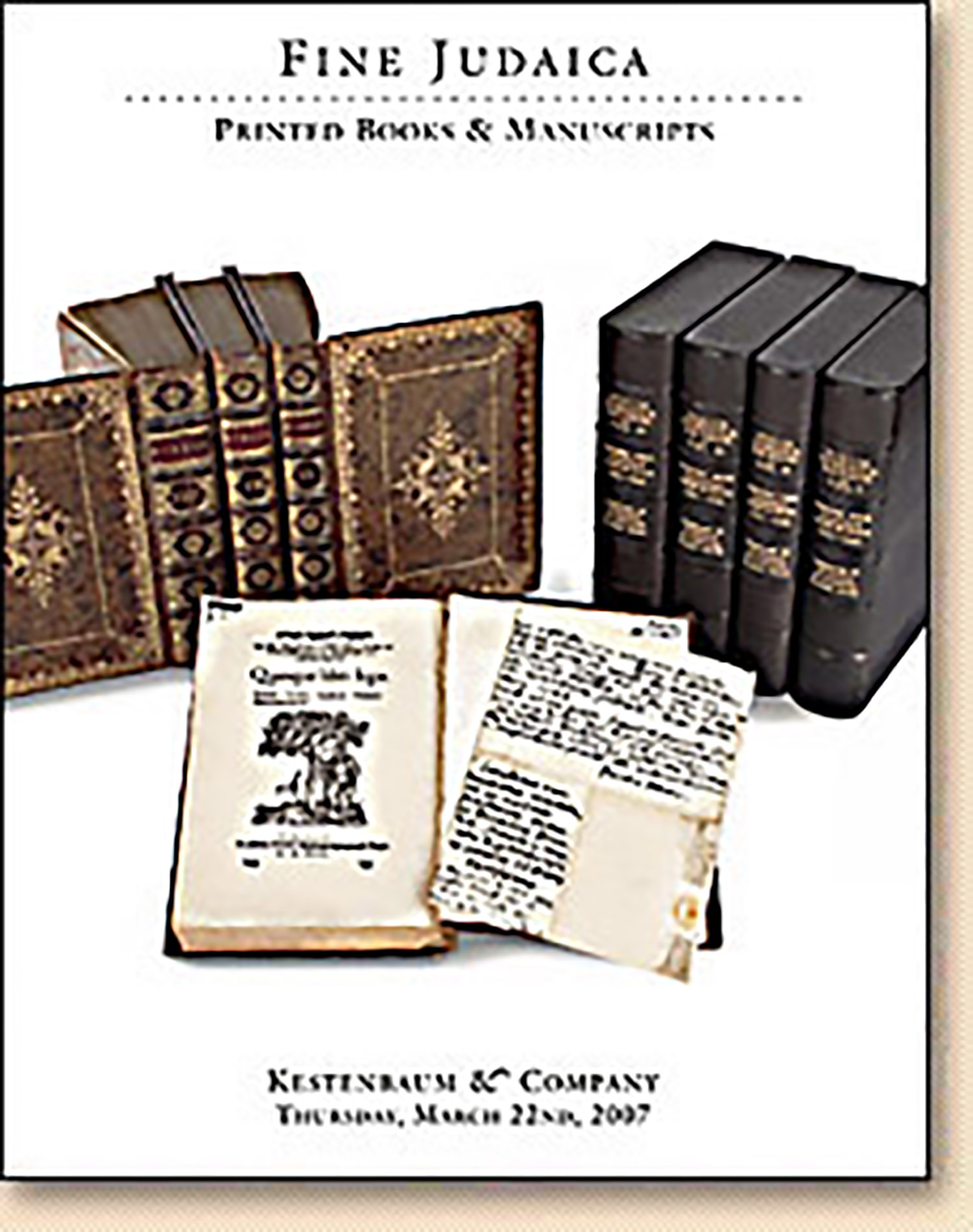Manuscript Prayerbook according to the rite of the Jews of Cochin [Nusach Shingly]. For weekdays and festive occasions, with special concentration of funeral rites

AUCTION 36 |
Thursday, March 22nd,
2007 at 1:00
Fine Judaica: Printed Books & Manuscripts
Lot 239
(INDIA).
Manuscript Prayerbook according to the rite of the Jews of Cochin [Nusach Shingly]. For weekdays and festive occasions, with special concentration of funeral rites
Cochin: 19th Century
Est: $4,000 - $6,000
PRICE REALIZED $15,000
Exotic Prayer Book from the Far East
The recorded history of the Jews of the Malabar Coast of southwest India reaches as far back as the year 1000 C.E. when the Jewish leader Joseph Rabban received a set of engraved copper plates from the Hindu ruler of Cranganore, listing various ceremonial and economic privileges. Due to a flood in the year 1341, the Jews were forced to evacuate their original home in Shingly, settling eventually in Cochin and environs. However, even into modern times they continued to refer to their custom as “Minhag Shingly.”
In Amsterdam in 1757, there appeared in print for the first time Seder Tephiloth Shabathoth ve-Shirim ke-phi Minhagei Anshei Shingili u-Kehal Kadosh be-Cochin.
Although for the most part the Jews of Cochin followed the standard Sephardi rite, there are several points of departure - and interest - in the so-called “Nusach Shingly”: The Kaddish on f.3r. resembles that recorded in Maimonides’ Prayer Book, “ve-yiphrok ameh [be-rachmetheh].” This would be the Yemenite influence on the community. Scholars have noted that the Minhag Shingly is a blend of Sephardi, Yemenite and Baghdadi elements.
The Hashkavoth [prayers for the deceased] for Man and Woman, Male Child and Female Child (ff.14-17) are quite distinctive. Also of note is the collective Memorial Service for “Ha- Tzaddikim” [the Righteous], beginning with the words, “Nichuth naphshan u-shevikath chovin ve-duchta ma’alyetha ve-chulaka tava di-b’nei tzaddikaya, tehé menuchath Rabbotheinu, etc.” [May the eternal rest of our Rabbis consist of: repose for the soul, forgiveness of sins, a good place and a good portion of the righteous] (f.19). The memorials for Men and Women on ff. 28-29 are identical with those of the manuscript written by Levy Hallegua in 1869 (See Sassoon Catalogue, Vol. I, p. 258).
Simchath Torah, the Festival of Rejoicing in the Torah, was a grand affair in old Cochin. (In fact, the very first Hebrew book published in Cochin was the Seder Minchath Simchath Torah [1876-7].) “On Motza’ei Simchath Torah, the night following the holiday, it is the custom here in Cochin to each sing songs in the synagogue, beginning with the eldest and concluding with the youngest. This goes on until nine hours. Afterwards, the women go out to kiss the Torah scrolls, at which time the Hazan ascends the Teivah [platform] to bless them, reciting four times ‘Mi she-beirach’ corresponding to the four matriarchs” (f.38r.). There follows a unique “Mi she-beirach Sarah ve-Rivkah Rachel ve-Leah, va-Avigail ve-Esther ha-Malkah bath Avichail…” (f.40r.). (Cf. Sasoon Cat., Vol. I, p. 261, no. 123.)
The final page of our prayer book is the circumcision and naming ceremony for a male servant, reflective of the fact tha
in Colonial India each household had its domestics.
See Ohel Dawid: Descriptive Catalogue of the Hebrew and Samaritan Manuscripts in the Sassoon Library, Vol. I (1932), pp. 257-270; A. Yaari, Hebrew Printing in the East, Part I (1940), pp. 90-94; O. Slapak, The Jews of India: A Story of Three Communities (IMC) (1995), pp. 27-35, 63, 68
